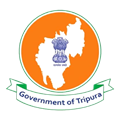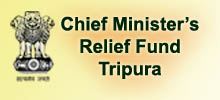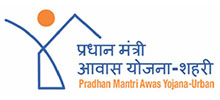Places of Interest
Within its small geographical area, Tripura offers plenty of attractions for the tourists in the form of magnificent palaces (Ujjayanta Palace and Kunjaban Palace at Agartala and Neermahal - Lake Palace at Melaghar), splendid rock-cut carvings and stone images (Unakoti near Kailashahar, Debtamura near Amarpur and Pilak in Belonia Sub-divisions), important temples of Hindus and Buddhists including the famous Mata Tripureswari temple (one of the 51 Pithasthans as per Hindu mythology) at Udaipur, vast natural as well as artificial lakes namely Dumboor lake in Gandacherra subdivision, Rudrasagar at Melaghar, Amarsagar, Jagannath Dighi, Kalyan Sagar, etc. at Udaipur, the beautiful hill station of Jampui hill bordering Mizoram, wild life sanctuaries at Sepahijala, Gumti, Rowa and Trishna.
The former Maharajas had constructed beautiful palaces in different locations of the state. These palaces provide a glimpse of the royal past of this erstwhile princely state.
Agartala
The main attractions in Agartala are Ujjayanta Palace State Museum, Tribal Museum, Sukanta Academy, M.B.B. College, Laxminarayan Temple, Uma Maheswar Temple, Jagannath Temple, Benuban Vihar, Gedu Mian Mosque, Malancha Niwas, Rabindra Kanan, Heritage Park, Purbasha, Handicrafts Designing Centre, Fourteen Goddess Temple, Portuguese Church etc.
Accommodation:
Gitanjali Guest House, Yatrika, Bhagat Singh Youth Hostel and Private Hotels.
How to reach Agartala?
- By air from Kolkata or Guwahati to Agartala.
- By train upto Agartala.
- By road from Guwahati via Meghalaya or Kolkata via Bangladesh.
Tripura State Museum :
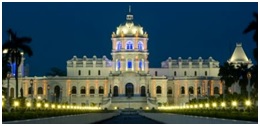
Tripura State Museum was established 1970. Now housed in the Ujjayanta Palace at the heart of the town, it preserves some rare images and epigraphs numismatic evidence which throw light on the glorious past of Tripura and some of the adjoining States. This royal house, which stands in the Capital city Agartala covering one sq. Km. area, was built by Maharaja Radha Kishore Manikya during 1897-1901. It is a two storied mansion, having a mixed type of architecture with three high domes, the central one being 86 feet high. The magnificent tile floor, curved wooden ceiling and beautifully crafted doors are particularly notable. The palace is set with huge Mughal style gardens, beautified by pools and gardens. Most of the sculptures acquired and displayed so far are from Udaipur, Pilak, Jolaibari and other sites of Tripura. Out of them, the sculptures from Pilak are the exquisite collections, depicting mixed culture of both Hindu and Buddhist pantheon. Most of the sculptures are made of sand stone and for that the formation of sculpture is very crude in nature. Low relief Dasavatar panels collected from Radhanagar in the vicinity of Agartala dated back to 18th cent. A. D.
Kunjaban Palace :
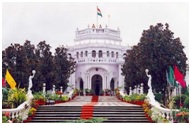
Kunjaban Palace, also known as ‘Pushpabanta Palace’, was built over a green hillock at the northern part of Agartala city. Maharaja Birendra Kishore Manikya (1909-1923) selected this beautiful place for building a suburban palace as a retreat and constructed it in 1917 which was named as ‘Pushpabanta Palace’. The Maharaja himself being a gifted artist is said to have drawn the plan of the palace and its adjoining garden. Poet Rabindranath Tagore stayed in the eastern apartment of this palace during his 7th and last visit to the state in 1926. This palace was the mute witness to many of the great poet's creations including a number of popular songs. This palace is the official residence of the Governor of Tripura now. The southern side of the garden has been made open for the public and has been named as ‘Rabindra Kanan’.
Malancha Niwas :
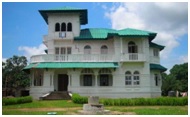
The Bungalow adjacent to Kunjaban palace situated on a hillock was originally a ‘kaccha’ house where Tagore stayed during his visit in 1919. The ‘pucca’ construction was subsequently built and given the name of Malancha Niwas.
Tripura Heritage Park :
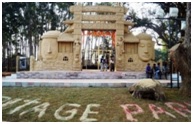
Heritage Park is an oasis of serenity over an area of about 4 hectares of land at Kunjaban in Agartala. It takes the visitor to a surreal world, providing a glimpse of the natural and cultural heritage of Tripura. The park abounds in a variety of indigenous plants and trees, including medicinal herbs which support a variety of avian fauna. An assortment of artifacts in various forms are scattered around the park, including heritage benches, pottery, woodcraft, stone. Chief Minister Manik Sarkar on November 30, 2012 inaugurated Heritage Park, the first ever initiative of its kind in Tripura and the Northeast Region. The park spreads over 4 hectares of undulating landscape showcases miniature of nine major heritage sites of the state including Unakoti hill sculptures, Neer Mahal, Tripurasundari Temple, Debtamura hill sculptures, archaeological relics of Pilak, Chandrapur Mosque (Rajnagar, Belonia), Mahamuni, Ujjayanta Palace, Chaturdash Devta Mandir etc. The park is also embellished with walking trail, amphi-theatre, grass lawns, rock garden, fossil fountain etc. Emphasis has been laid on the use of local material including bamboo and even waste articles in constructions. Each structure, including public conveniences, has been set up in consonance with the surroundings and provides a heritage touch. Ramp has been provided at the entrance for the elderly and differently-abled persons.
Tripura Sundari Temple :
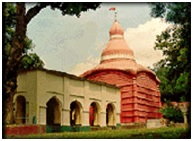
There is a common belief that the name of the State has originated from "Tripura Sundari" - the presiding deity of the land which is known as one of the "51 Pithas" of Hindus. This temple, situating in Udaipur in Gomati district, was built in 1501 A.D. by Maharaja Dhanya Manikya. People of different communities and different places visit this temple to perform worship and prayers. During Diwali Mela this place turns into a confluence of people. In the eastern side of the temple there is a famous Kalyan Sagar where fishes and tortoises of huge size are found and devotees feed them with "muri" and biscuits. No fishing is permitted in the Kalyan Sagar.
Pilak – in Jolaibari, South Tripura :
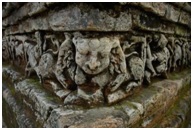
Termed mainly as a Buddhist heitage site floursihing between 8-12th centuries of the Christian era this has also given signs of Hinduism. The significant spots discovered here are Shyam Sundar Tilla, Deb Bari, Thakurani Tilla, Balir Pathar, Basudev Bari and Sagar Deba. A number of rock-cut images and terracotta plaques, still speaking of a unique glorious cultural past of Tripura, are lying scattered in various places of the area. Some of the important images found there are Avolokiteswar, Mahisasur Mardini, bronze images of Buddha and Vishnu in addition to terracotta plaques, sealing Coins etc. The molded terracotta plaques bear resemblance with molded plaques recovered from Paharpur and Mainamati. The Buddhist Complex here may be assigned a date between 9 and 10 century A.D. It may be presumed that these extensive plains of Tripura were under the control of several dynasties who ruled in Eastern Bengal and Samatat in ancient period. Some of them were Buddhists and the others were Hindu's. Most of these rulers had their capitals near this region.
Unakoti:
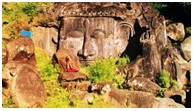
It is a Shaiva shrine dateing back to 7th - 9th centuries if not earlier. The marvelous rock carvings, murals with their primitive beauty, waterfalls are not to be missed. Unakoti means one less than a crore and it is said that these many rock cut carvings are available here. As per Hindu mythology, when Lord Shiva was going to Kashi along with one crore gods and goddesses he made a night halt at this location. He asked all the gods and goddesses to wake up before sun rise and proceed for Kashi. It is said that in the morning, except Shiva himself, no one else could get up. Set out for Kashi himself cursing the others to become stone images. As a result we have one less than a crore stone images and carvings at Unakoti. These carvings are located at a beautifully landscaped forest area with green vegetation all around which add to the beauty of the carvings. The images found at Unakoti are of two types namely rock-carved figures and stone images. Every year a big fair popularly known as 'Ashokastami Mela' is held in the month of April which is visited by thousands of pilgrims.
Fourteen Goddess Temple :
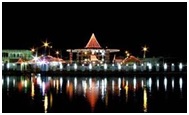
It is located about 14 Km. away from Agartala at a place called Old Agartala. In the face of continued fight with Shamser Gazi, Maharaja Krishna Manikya had shifted the capital from Udaipur to Old Agartala. It continued to be the capital till it was shifted to Agartala. Near the sacred 14 goddess temple during the month of July every year a Kharchi festival is organised and thousands of pilgrims and devotees visit this festival.
Bhuvaneswari Temple :
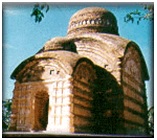
On the right bank of river Gomati at Udaipur is found the ruins of a big palace built by Maharaja Govinda Manikya (1660-75 A.D.). The Bhuveneswari temple is situated adjacent to this palace. It finds close literary reference in Great poet Rabindranath Tagore's novels and drama namely 'Bisharjan' and 'Rajarshi'. Other attractions in Udaipur are Gunabati group of temples and vast lakes.
Neermahal :
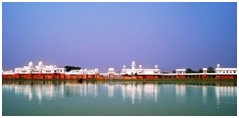
This magnificent lake palace was constructed as a summer resort in 1930 by late Maharaja Birbikram Kishore Manikya Bahadur. Neermahal is situated at a distance of 53 km. from Agartala in the middle of a natural lake called Rudrasagar having an area of 5.35 Sq.Km. The construction was undertaken by Martin & Burn Co. and it is the only lake palace in the entire eastern India. A good combination of Hindu and Mughal architecture is noticed on the domes of the palace. There are mainly two parts of the palace - one on the western side known as Andar Mahal which was used by the royal family and another on the eastern side which was used for the security personnel and servants. There is a beautiful garden laid in the western side of the palace. In the garden there is an open stage where drama, theatre, etc. used to be organized. Flood lighting of the palace, Light and Sound show etc. have been later additions to this magnificent palace.
Jampui Hills :
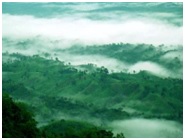
Known as a permanent seat of eternal spring is situated at an altitude of 3000 feet above sea level. Jampui is famous for its charming landscape and bracing climate. The excellent climatic condition, green forests, beautiful orange garden, view of raising and setting sun are wonderful sight for tourists. The hill range has 11 villages inhabited by Mizo (Lushai tribes) and also by Reang tribes. Population of the hill range is about 8,000 and the main occupation of the villagers is orange cultivation The temperature variation in the hill range is very nominal in all seasons and is ideal for the purpose of tourism. The sun rise and sun set in the hill range is a delight to watch.
Sepahijala :
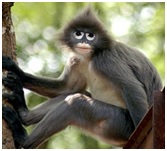
Situated at a distance of 25 km. from Agartala, Sepahijala covering an area of 18.532 km. is the natural habitat for more than150 species of residential birds, migratory birds, orchids. It attractions include boating facilities, wild life, botanical garden, zoo, elephant joy-rides, rubber and coffee plantation. The famous spectacled monkey is found here.
Trishna Wild Life Sanctuary :
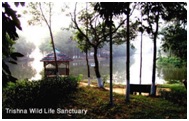
Trishna Wild Life Sanctuary is located at about 100 Km. away from Agartala in Belonia Subdivision of South Tripura District. Bison is the main attraction in this sanctuary, in addition to the resident and migratory birds.
Kamalasagar :
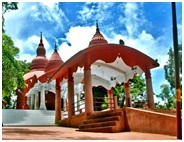
Vast lake at the border of Bangladesh was excavated by Maharaja Dhanya Manikya in the 15th century. Overlooking Bangladesh, on the bank of Kamalasagar, there is a famous temple of Goddess Kali dating back to 16th century. It is one of the excellent picnic spots in the state with scenic beauty.
Deotamura :
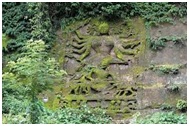
Deotamura is famous for its panels of rock carvings on the steep mountain wall on the bank of Gomati. There are huge images carved of Shiva, Vishnu, Kartika, Mahisasur Mardini Durga and other gods and goddesses. This is also called Chabimura. These images date back to 15th-16th centuries.
Dumboor Lake :
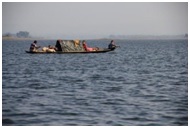
A water area of 41 sq.km. with an un-ending spell of luxuriant green vegetation all around stands majestic for her exceedingly charming beauty and 48 islands in the midst of the lake Migratory birds, Water sports facilities are additional attractions. There is a Hydel Project near the lake from where River Gomati originates and this is called Tirthamukh where on 14th January every year famous 'Pous Sankranti Mela' takes place. The lake is the confluence of rivers Raima and Sarma. Various species of migratory birds are noticed in the winter and it has rich reservoir of natural and cultured fishes.
- Back to previous page
- |
-
Page last updated date : 25-11-2022 10:40 AM

